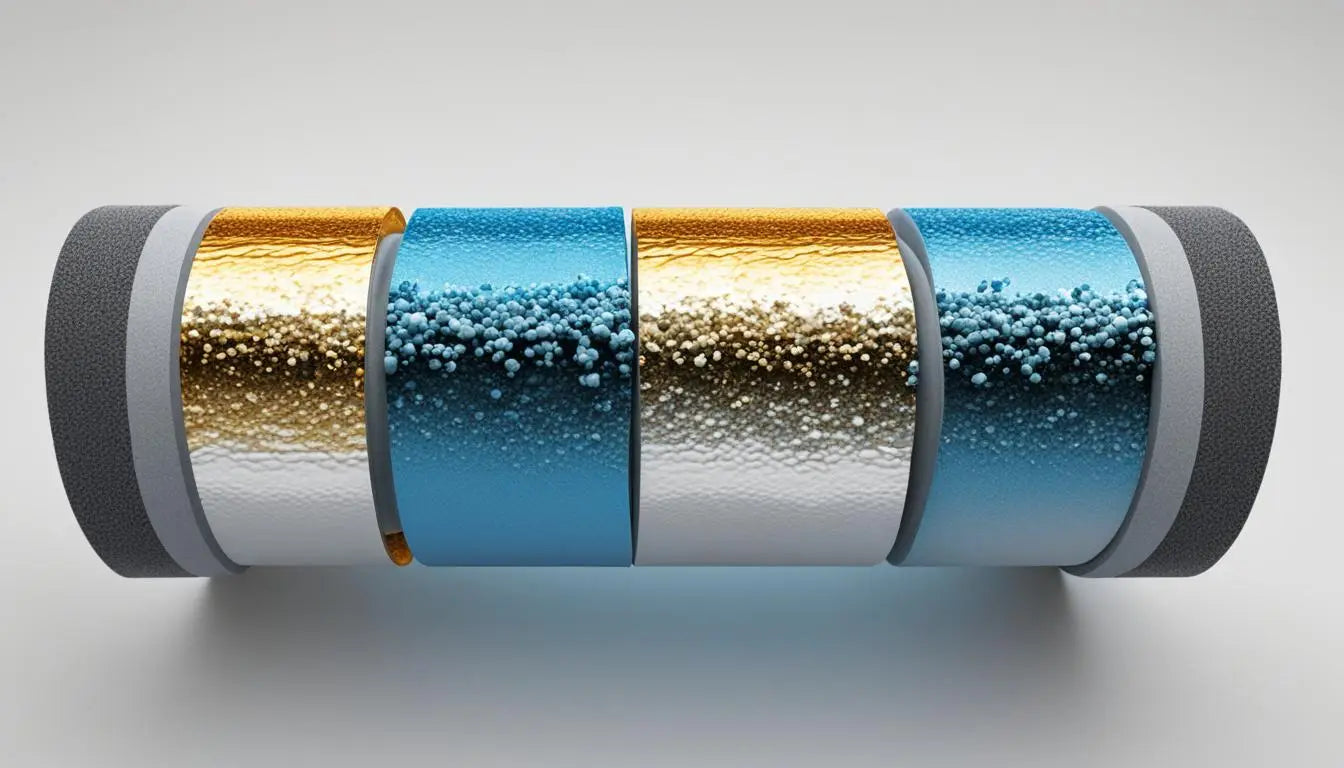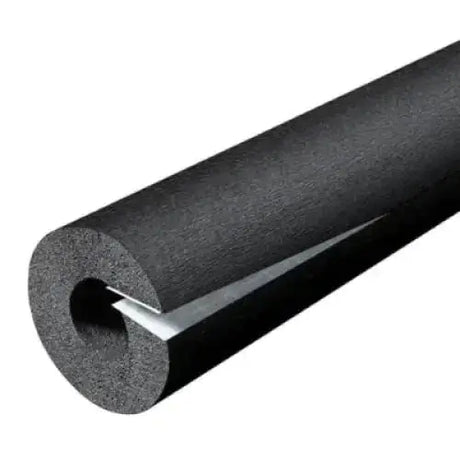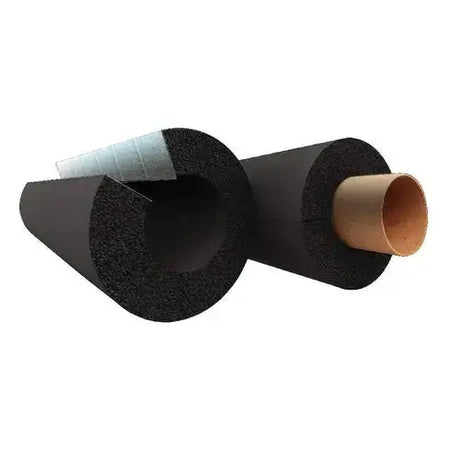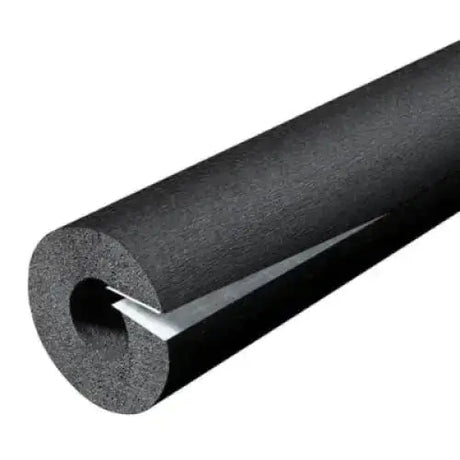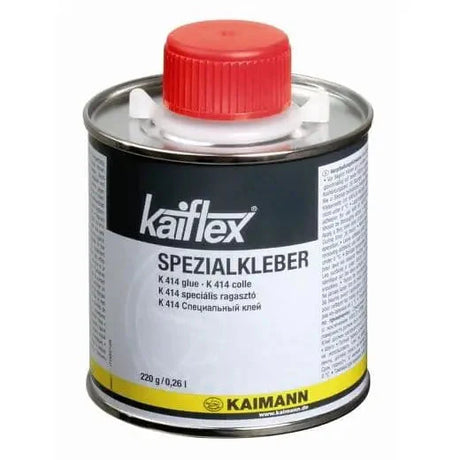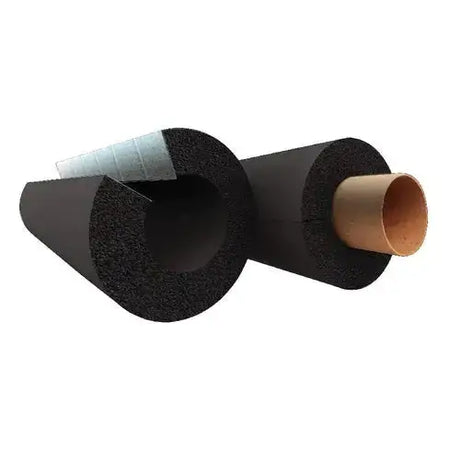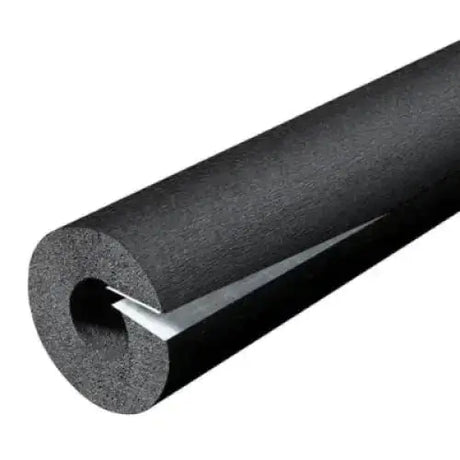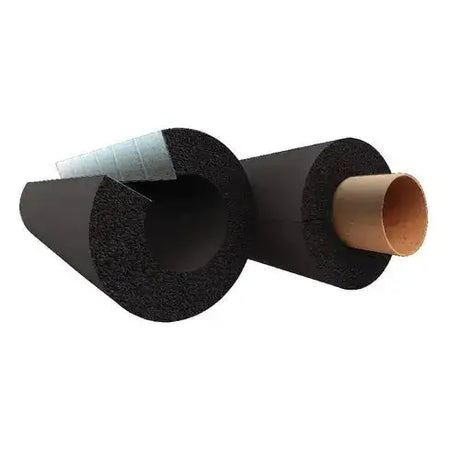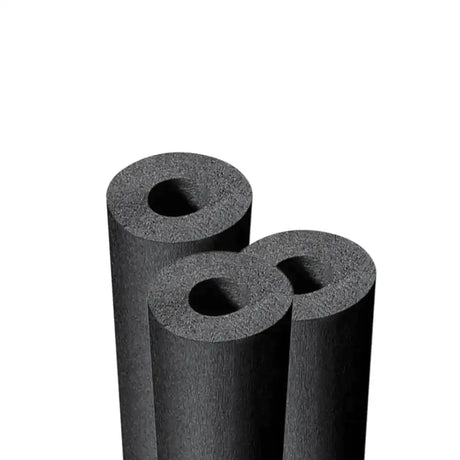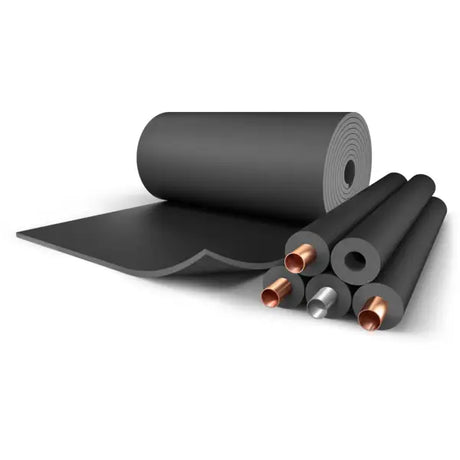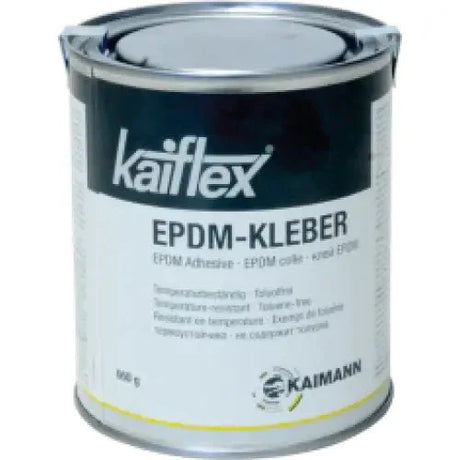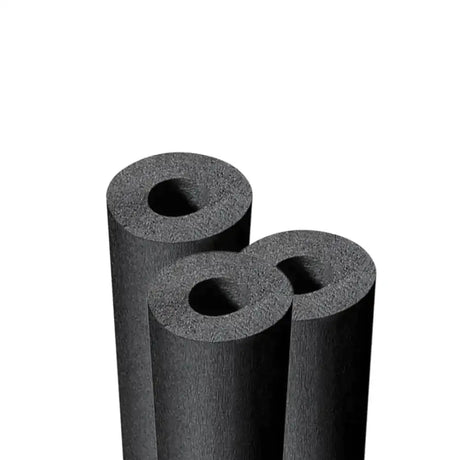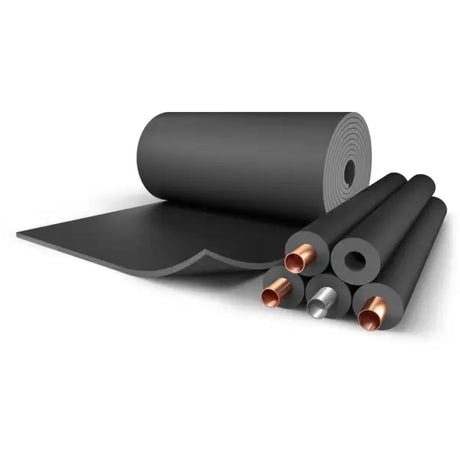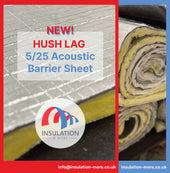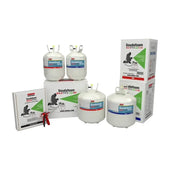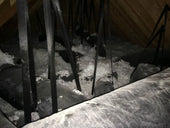When insulating pipes, have you pondered whether rubber or foam is better? This question often sparks debates among experts. Each insulation material offers unique advantages and disadvantages.
Choosing the right pipe insulation type optimises energy efficiency. It ensures proper installation and manages insulation costs. Let's explore rubber and foam insulation to determine the best option.
When choosing pipe insulation, consider the project's specific requirements. Determine the desired performance outcomes. This simplifies product selection and ensures appropriate installation.
Popular options are rubber and foam plastic insulation. Rubber insulation is flexible, closed-cell foam made from synthetic rubber. Common formulations are NBR/PVC and EPDM.
Foam plastic insulation is often used on residential and light commercial piping systems. It's commonly referred to as polyethylene, polyolefin, poly, or PE.
Understanding the Basics of Pipe Insulation
Pipe insulation is essential for piping systems. It maintains the desired fluid temperature. Whether hot or cold pipes, insulation minimises heat transfer. It improves energy efficiency and prevents condensation issues.
By understanding pipe insulation basics, you can make informed decisions. You can select and install suitable insulation materials.
The Importance of Insulating Your Pipes
Insulating pipes offers numerous benefits for energy efficiency and longevity. For hot water pipes, insulation keeps heat in. Water remains at desired temperature from boiler to taps/radiators.
This improves comfort and reduces energy consumption and heating costs. For cold pipes, insulation keeps heat out. Pipes carrying cold water/refrigerant don't warm up.
This maintains cooling system efficiency and prevents condensation on pipes. Condensation can lead to corrosion and structural damage.
Types of Pipe Insulation Materials
There are two main pipe insulation categories: closed-cell foam and fibreglass (lagging). Closed-cell foam includes flexible elastomeric foam and polyethylene foam.
Elastomeric foam (nitrile, EPDM) offers superior thermal conductivity, flexibility and durability. It suits a wide range of applications. Polyethylene foam is cost-effective for residential/light commercial uses.
Fibreglass insulation offers good thermal performance in various thicknesses/densities. It suits different temperature ranges and pipe sizes. However, it may lack moisture resistance of closed-cell foams.
When selecting insulation, consider thermal conductivity, temperature range, moisture resistance and fire performance. Evaluate application requirements and material properties for optimal insulation choice.
Comparing Rubber and Foam Pipe Insulation
When selecting pipe insulation material, it's crucial to consider rubber and foam insulation's performance characteristics. By comparing them based on thermal conductivity, durability, moisture resistance, and mould resistance, you can make an informed decision.
Thermal Conductivity
Thermal conductivity measures an insulation material's ability to prevent heat transfer. A lower K-value indicates better thermal efficiency. Rubber insulation typically offers a lower, more thermally-efficient K-value than foam plastic insulation.
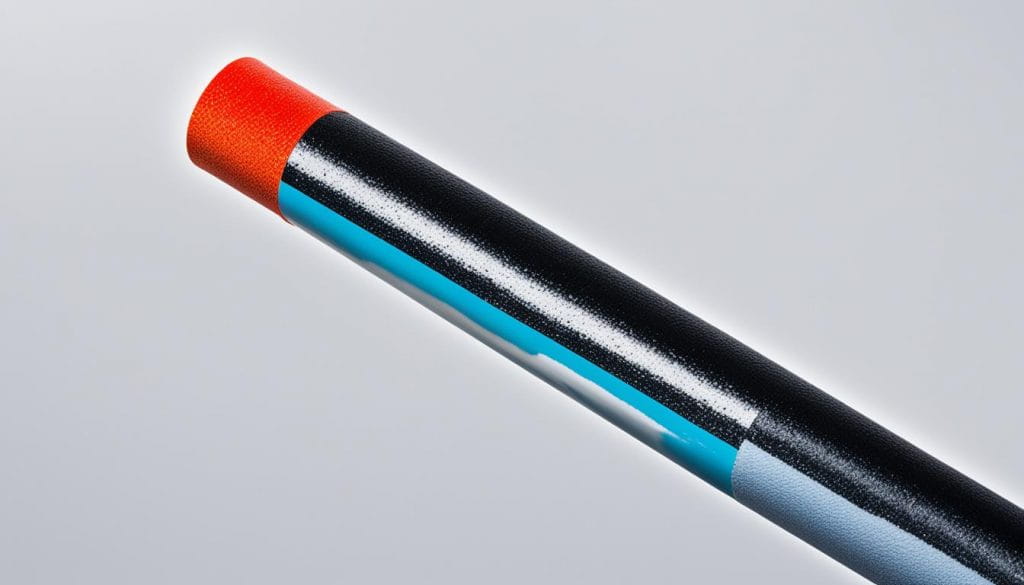
Durability and Longevity
Rubber insulation, particularly elastomeric foam rubber, is generally more durable and has a longer lifespan. This increased durability can lead to reduced maintenance and replacement costs, making rubber insulation cost-effective long-term.
Resistance to Moisture and Mould
Moisture and mould can compromise insulation's effectiveness and cause structural damage. Elastomeric foam rubber insulation, especially EPDM (Ethylene Propylene Diene Monomer), stands out for its excellent resistance to these issues.
In contrast, foam plastic insulation may be more susceptible to moisture and mould growth, potentially leading to reduced performance and increased maintenance requirements.
| Insulation Performance Characteristics | Rubber Insulation | Foam Insulation |
|---|---|---|
| Thermal Conductivity (K-value) | Lower, more thermally-efficient | Higher, less thermally-efficient |
| Durability and Longevity | More durable, longer lifespan | Less durable, shorter lifespan |
| Moisture Resistance | Excellent, especially EPDM | More susceptible to moisture |
| Mould Resistance | Excellent, especially EPDM | More susceptible to mould growth |
By evaluating these key insulation performance characteristics and comparing rubber and foam insulation options, you can select the appropriate material for your application, ensuring optimal thermal efficiency, durability, and resistance to moisture and mould.
Advantages of Rubber Pipe Insulation
Rubber pipe insulation stands out as the best insulation material for piping systems. It offers numerous advantages.
Elastomeric foam insulation made from nitrile rubber or EPDM provides superior performance over other insulation materials.
Excellent Thermal Performance
Rubber pipe insulation has exceptional thermal performance. Elastomeric foam insulation has lower thermal conductivity values compared to foam plastic insulation.
This means it provides better insulation and maintains the desired temperature of water inside pipes more effectively. Improved thermal performance translates to increased energy efficiency and potential cost savings on heating and cooling bills.
Flexibility and Ease of Installation
Elastomeric foam insulation can be easily cut to size and fitted around pipes, even in tight spaces or complex configurations. This flexibility allows for a snug fit, minimising gaps and ensuring optimal insulation performance.
The installation process is straightforward, as rubber insulation can be quickly applied to pipes without specialised tools or extensive training.
High-quality rubber insulation, such as Aeroflex® EPDM, offers several other advantages:
- Non-corrosive on metallic piping, preventing damage to the pipes over time
- Higher continuous operating temperature limit compared to NBR/PVC insulation
- Enhanced UV resistance, making it suitable for outdoor applications
- Class O fire performance, ensuring a higher level of safety in the event of a fire
When selecting rubber pipe insulation, consider the specific requirements of your application, such as temperature range, environmental factors, and fire safety regulations. By choosing high-quality elastomeric foam insulation like nitrile rubber or EPDM, you can ensure optimal performance, durability, and ease of installation for your piping system.
Benefits of Foam Pipe Insulation
Foam pipe insulation, especially polyethylene foam, offers several advantages. It's cost-effective compared to rubber insulation. Foam insulation has a lower initial cost, making it budget-friendly.
While rubber insulation provides better thermal performance and durability, foam pipe insulation is lightweight and easy to install. Its flexibility allows it to fit pipes snugly, minimising heat loss.
Moreover, polyethylene foam is moisture and mould-resistant. Being a closed-cell material, it doesn't absorb water easily, reducing moisture-related damage and mould growth.
For light commercial applications like restaurants or retail stores, foam insulation may be suitable. However, for demanding industrial settings, rubber insulation offers better performance and durability.
When choosing between foam and rubber insulation, consider factors like budget, thermal performance requirements, and environmental conditions. Consult insulation experts to make an informed decision balancing cost-effectiveness with long-term energy efficiency.
Factors to Consider When Choosing Between Rubber and Foam
Selecting the most suitable insulation material requires considering various factors. Rubber and foam insulation differ in performance, durability and cost-effectiveness.
When choosing between them, key aspects must be considered. This ensures the best decision for your application.
Application and Environment
The application and environment are crucial factors. Different materials suit specific conditions better.
Rubber insulation excels in commercial and industrial applications. It offers superior thermal conductivity and higher continuous operating temperatures.
Rubber insulation resists moisture and mould well. This makes it ideal for high humidity environments.
Foam plastic insulation suits residential and light commercial applications. Here, environmental factors are less demanding.
Budget and Cost-Effectiveness
Foam plastic insulation has a lower initial cost. But rubber insulation may be more cost-effective long-term.
Rubber insulation's durability and performance reduce maintenance costs. Its moisture resistance and high temperature limit extend lifespan.
Long-term energy savings offset rubber insulation's higher upfront cost.
Compatibility with Existing Systems
Compatibility with existing systems is critical. Chosen insulation must work seamlessly with current setup.
Incompatibility reduces performance and increases wear. Some materials unsuitable for certain pipes, chemicals or temperatures.
Consulting experts ensures compatibility. This prevents issues and optimises performance.
| Factor | Rubber Insulation | Foam Plastic Insulation |
|---|---|---|
| Thermal Conductivity | Lower, more thermally efficient | Higher, less thermally efficient |
| Durability | More durable, longer lifespan | Less durable, shorter lifespan |
| Moisture and Mould Resistance | Excellent resistance, especially EPDM | More susceptible to moisture and mould |
| Initial Cost | Higher initial cost | Lower initial cost |
| Long-Term Cost-Effectiveness | More cost-effective over time | Less cost-effective over time |
Evaluating application, environment, budget and compatibility ensures informed insulation choice. This optimises performance, durability and long-term value.
Is Rubber or Foam Pipe Insulation Better?
Choosing the best pipe insulation material depends on your project needs. Both rubber and foam insulation have advantages and drawbacks.
Evaluate factors like application, environment, budget, and performance goals. This will help you select the ideal insulation material.
Evaluating Your Specific Needs
Consider these factors to determine if rubber or foam insulation is better:
- Application: Commercial, industrial, or residential?
- Environment: Temperature, humidity, exposure conditions?
- Budget: How much can you allocate?
- Performance: Thermal efficiency, durability, fire safety?
Assessing these aspects narrows down your options for the best fit.
Consulting with Insulation Experts
Seeking guidance from insulation experts is invaluable for an informed decision. They provide tailored recommendations based on your project's requirements.
Experts offer insights into factors like thermal conductivity, durability, fire performance, and cost-effectiveness. This helps select the optimal insulation material.
| Consideration | Rubber Insulation | Foam Insulation |
|---|---|---|
| Thermal Conductivity | Superior, especially EPDM | Good, but lower than rubber |
| Durability and Lifespan | Excellent, particularly in harsh environments | Good, but may degrade faster |
| Fire Performance | Better, with predictable behaviour | Good, but less consistent |
| Cost-Effectiveness | Higher initial cost, potentially economical long-term | Lower initial cost, may require replacement |
Weighing these factors and consulting experts ensures you make an informed decision on whether rubber or foam insulation is better for optimal performance, longevity, and value.
Proper Installation Techniques for Optimal Performance
Ensure your pipe insulation performs well by following proper installation methods. Whether using rubber or foam, success lies in thorough surface prep and meticulous sealing of joints. Installing correctly maximises effectiveness, improving energy efficiency and reducing heating costs.
Surface Preparation and Cleanliness
Before installing pipe insulation, prepare surfaces properly. Remove any dirt, grease or moisture that could prevent secure adhesion. Clean pipes thoroughly with a suitable degreaser or cleaning agent. Allow to dry fully before installation. Ensuring a clean, dry surface significantly improves insulation's ability to bond effectively, resulting in better overall performance.
Sealing Joints and Seams
Once insulation is in place, seal all joints and seams to create an airtight, moisture-resistant barrier. Gaps or openings allow heat escape or moisture entry, compromising effectiveness. This can lead to condensation, mould growth, and structural damage. Use adhesives, tapes or sealants designed for your insulation material to prevent these issues.
Carefully sealing all joints ensures your pipe insulation maintains optimal performance over time, keeping pipes protected and energy bills low. Visit Insulation & More for high-quality pipe insulating products like Rockwool, fibreglass and mineral wool.

